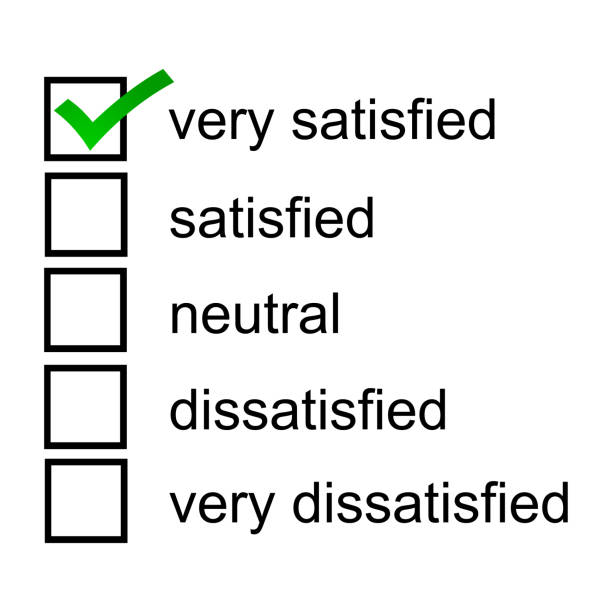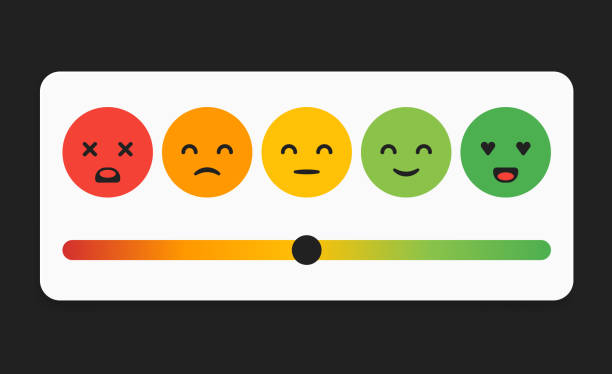Exploring the Effectiveness of 5-Point Rating Scale Illustrations

Introduction
Likert Scales have become a pivotal tool in various sectors. Whether it’s in market research, psychology, or education, these scales help decode complex human behaviors and preferences. From your experience, you may recall having participated in a survey, and clicking on options such as “strongly agree” or “strongly disagree”. That’s the Likert Scale in action! Let’s explore the myriad of Likert Scale examples to gain better clarity on its usability and application.
Likert Scale Examples: A Quick Overview
The Likert Scale, which was named after its inventor Rensis Likert, is a series of questions and statements that respondents specify their level of agreement on. these responses can range from “Strongly agree” to “Strongly disagree”. To learn more about real-world, examples, let’s dive in.
1. Product Feedback
a. Evaluating Product Usability
Imagine launching a new tech gadget. Feedback can be garnered through statements like:
– I found the product easy to use.
– The instructions provided were clear.
b. Measuring Product Satisfaction
– I am satisfied with the product’s performance.
– The product meets my expectations.
2. Employee Satisfaction Surveys
a. Understanding Job Satisfaction
– I feel valued in my role.
– My work environment is conducive to productivity.
b. Gauging Opportunities for Growth
– I believe there are adequate opportunities for professional growth.
– My contributions are recognized and rewarded.
3. Customer Service Evaluation
a. Analysing Service Quality
Customers after interacting with support teams can respond to:
– The customer service representative was knowledgeable.
– My issue was resolved promptly.
b. Assessing Overall Satisfaction
– I am satisfied with the resolution provided.
– I would recommend this company based on the service I received.
4. Educational Assessments
a. Evaluating Online Learning Platforms
With the surge of e-learning platforms, feedback becomes crucial:
– The online resources were helpful.
– The platform was user-friendly.
b. Teacher Evaluations
For institutions aiming to improve teaching quality:
– The teacher was effective in delivering lectures.
– Assignments and exams were relevant to the course content.
5. Healthcare Assessments
a. Patient Satisfaction Surveys
For healthcare providers aiming to improve patient experience:
– The waiting time was reasonable.
– The doctor listened to my concerns attentively.
b. Treatment Effectiveness
Patients after receiving treatment might be given statements like:
– My symptoms have improved after the treatment.
– I was adequately informed about potential side effects.
The Mechanics Behind the Likert Scale
While the Likert Scale might seem straightforward, there’s a meticulous process behind crafting the perfect statements. They need to be unbiased, clear, and relevant to the research objective.
Advantages of Using Likert Scale in Research
This scale helps simplify complex human emotions to quantifiable data, thus making it easier for researchers to thus quantify and analyze to draw conclusions.
Drawbacks and Limitations
No tool is without its limitations. Some argue that the Likert Scale can oversimplify responses, potentially missing out on nuanced feedback.
How to Interpret Likert Scale Data?
Interpreting data from a Likert Scale requires understanding of statistical tools and methodologies, ensuring that the feedback is not just collected but also effectively utilised.

Conclusion
The Likert Scale is an indispensable tool for various sectors. Through practical examples, we see its flexibility and adaptability. Whether it’s gauging customer satisfaction or assessing an educational tool, the Likert Scale proves to be a robust method to capture feedback.
FAQs
- How is a Likert Scale different from a Semantic Differential Scale?
While both are used to measure attitudes, a Likert Scale gauges the degree of agreement or disagreement against a statement, whereas the Semantic Differential Scale measures attitudes across a bipolar scale, like “Happy-Sad”.
- Can a Likert Scale have more than 5 response options?
Absolutely! While a 5-point scale is common, there are also 7-point or even 9-point scales, depending on the depth of feedback required.
- Why is it important to have neutral options in a Likert Scale?
A neutral option, like “neither agree nor disagree”, allows respondents who genuinely don’t have a strong opinion to not lean towards any side.
- Is the Likert Scale only applicable to market research?
No. While popular in market research, it’s also extensively used in psychology, education, healthcare, and various other sectors.
- How do researchers ensure that Likert Scale questions aren’t biassed?
Through meticulous crafting and piloting of questions, ensuring clarity, neutrality, and relevance.
- Does the order of questions or statements affect the responses on a Likert Scale?
Yes, question order can influence responses. It’s essential to randomize or strategically order them to avoid such biases.
External Links/ Sources:
